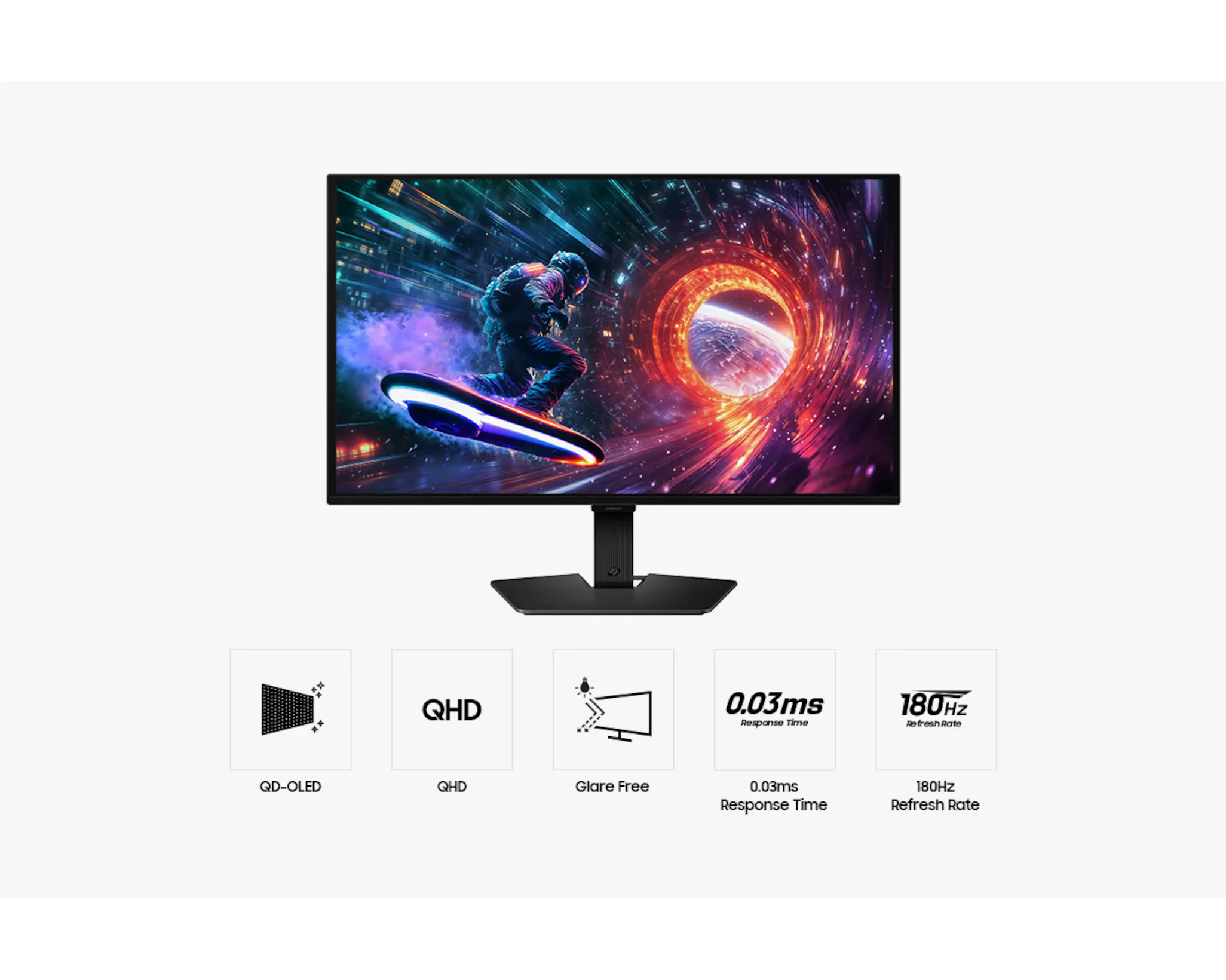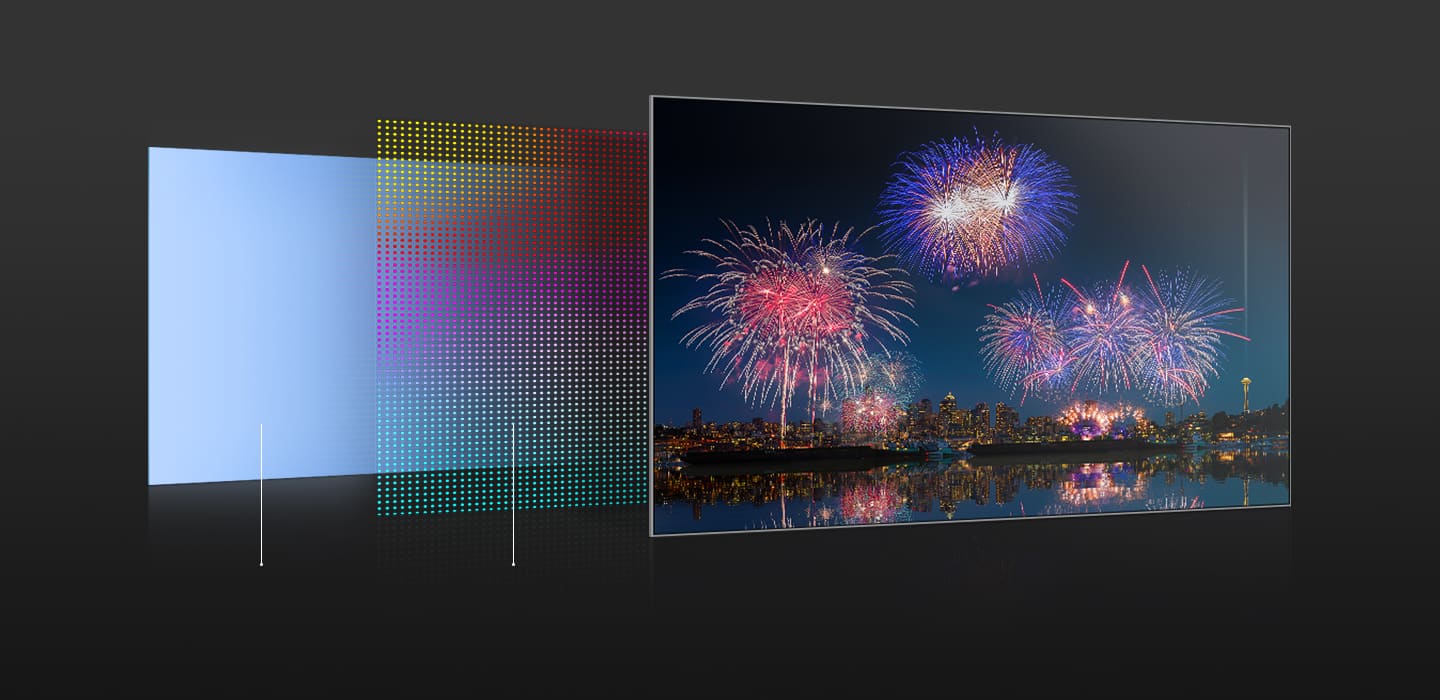Samsung has expanded its gaming monitor lineup with the Odyssey G50SF. Starting at the equivalent of $375 in China, this 27-inch QD-OLED monitor is Samsung’s most affordable entry into premium display technology so far.
Unfortunately, there seems to be huge regional differences in the G50SF’s pricing strategy. While Chinese consumers can purchase it for about $375, the monitor costs around $450 in Taiwan and $570 in New Zealand. A wider international launch is expected soon, though exact pricing for additional markets hasn’t been announced yet.
Pricing is nevertheless aggressive, which is a growing trend for OLED monitors. For example, Dell recently unveiled its AW2725D at $550, positioning it as the company’s most affordable QD-OLED offering.
Technical Specifications and Trade-offs
 The G50SF features a 27-inch QD-OLED panel with 1440p resolution – a sweet spot for gaming that balances visual fidelity with performance demands. Samsung equipped the monitor with a 180Hz refresh rate and claims a 0.03ms response time, typical of OLED’s near-instantaneous pixel switching. An anti-glare coating addresses one of OLED’s traditional challenges, helping reduce reflections in bright environments.
The G50SF features a 27-inch QD-OLED panel with 1440p resolution – a sweet spot for gaming that balances visual fidelity with performance demands. Samsung equipped the monitor with a 180Hz refresh rate and claims a 0.03ms response time, typical of OLED’s near-instantaneous pixel switching. An anti-glare coating addresses one of OLED’s traditional challenges, helping reduce reflections in bright environments.
For color reproduction, the display covers 99% of the DCI-P3 gamut and supports HDR10. Both AMD FreeSync and NVIDIA G-Sync work through the monitor’s HDMI 2.0 or DisplayPort 1.2 inputs, ensuring tear-free gaming across different GPU brands.
To achieve the lower price point, Samsung made some deliberate compromises. The G50SF uses what the company describes as a “less advanced” QD-OLED panel compared to its premium siblings. You won’t find the Tizen Smart Hub or built-in speakers here, and the stand offers only basic tilt adjustment—no height, swivel, or pivot options.
What’s QD-OLED?

Samsung’s implementation of quantum dot OLED differs from the W-OLED panels that LG produces. Rather than starting with white light and filtering it through color filters (which wastes some light energy), QD-OLED uses a blue light source that excites quantum dot nanocrystals. These dots convert the blue light into precisely tuned red and green wavelengths, while blue pixels remain untouched.
This has several advantages. QD-OLED can offer higher peak brightness levels and a wider color gamut than traditional OLED displays. The technology also maintains color accuracy even at maximum brightness—something that can challenge other display types. Because the quantum dots emit light uniformly in all directions, viewing angles remain excellent from virtually any position.
The G50SF Within Samsung’s Lineup
The G50SF slots below Samsung’s other OLED offerings, which include the premium G9, G8, and G6 models. The Odyssey OLED G6, for instance, pushed boundaries with a 27-inch panel running at 360Hz. Meanwhile, the 2025 G6 iteration features a 500Hz refresh rate, the first OLED screen to reach that threshold.
Samsung’s 32-inch Odyssey OLED G8 grabbed headlines as the industry’s first 4K monitor with a 240Hz refresh rate. The company even ventured into glasses-free 3D with the Odyssey 3D (G90XF model).
Samsung’s pricing strategy is part of a larger industry shift. After years of OLED technology remaining prohibitively expensive for most consumers, 2025 has seen prices drop dramatically across multiple manufacturers. It is now not uncommon for OLED 27-inch 1440p models to appear below $600, a price point that seemed impossible just two years ago.
Competition has also intensified as more brands enter the space. ASUS, Acer, MSI, Gigabyte, and AOC all released affordable OLED options throughout 2025.

